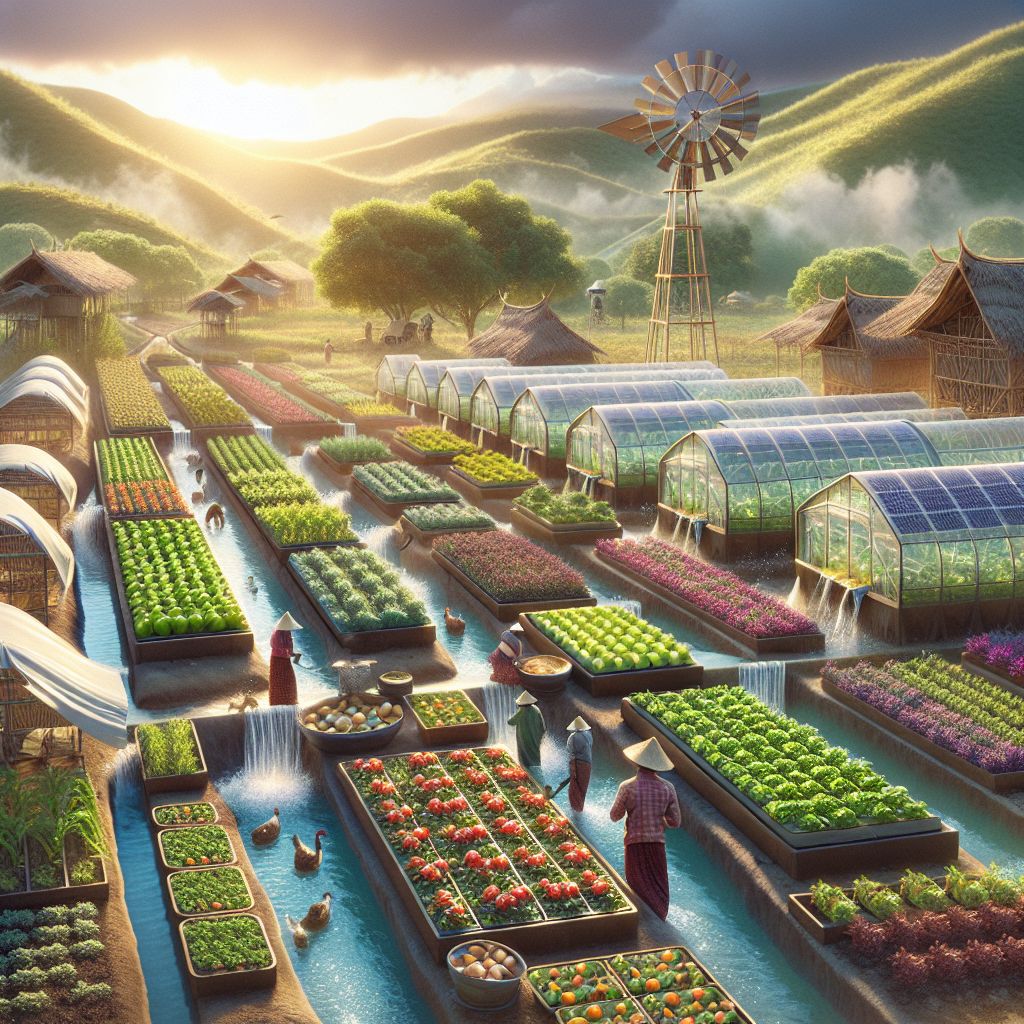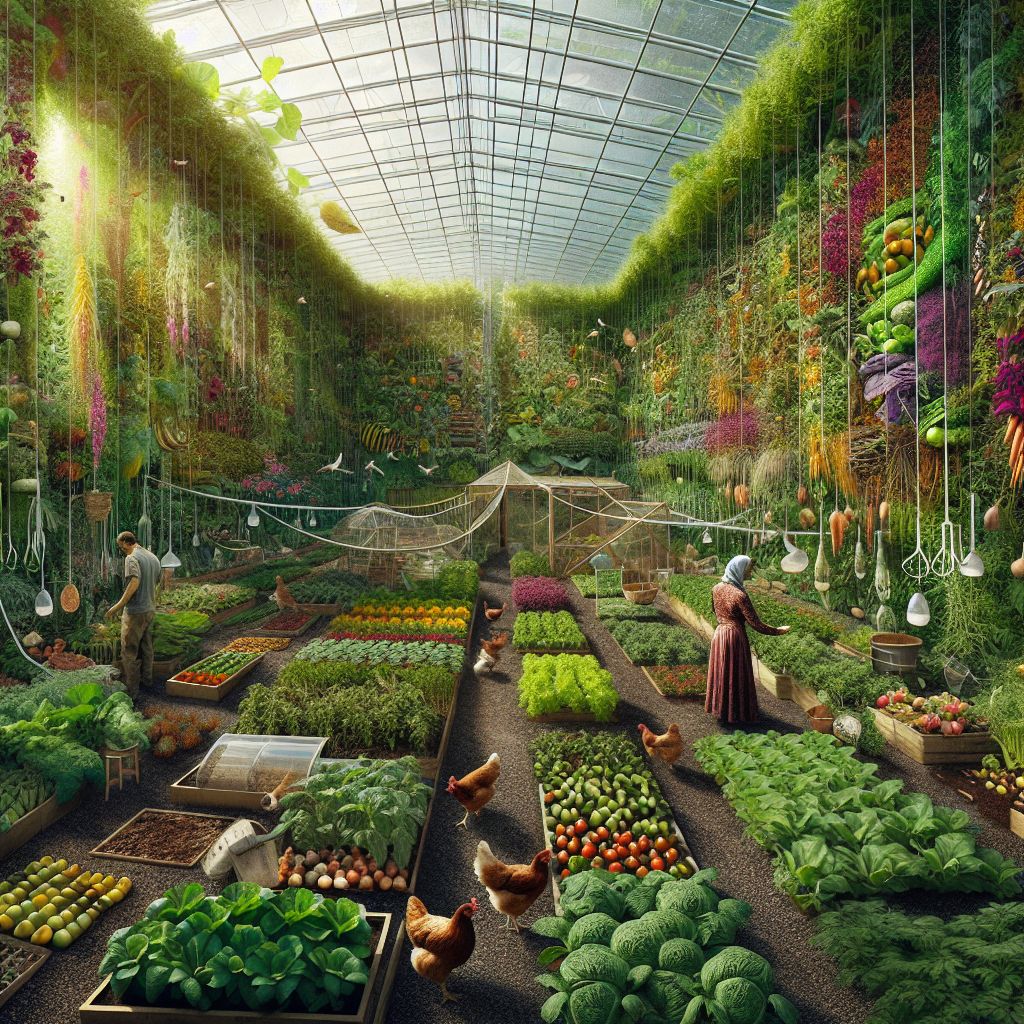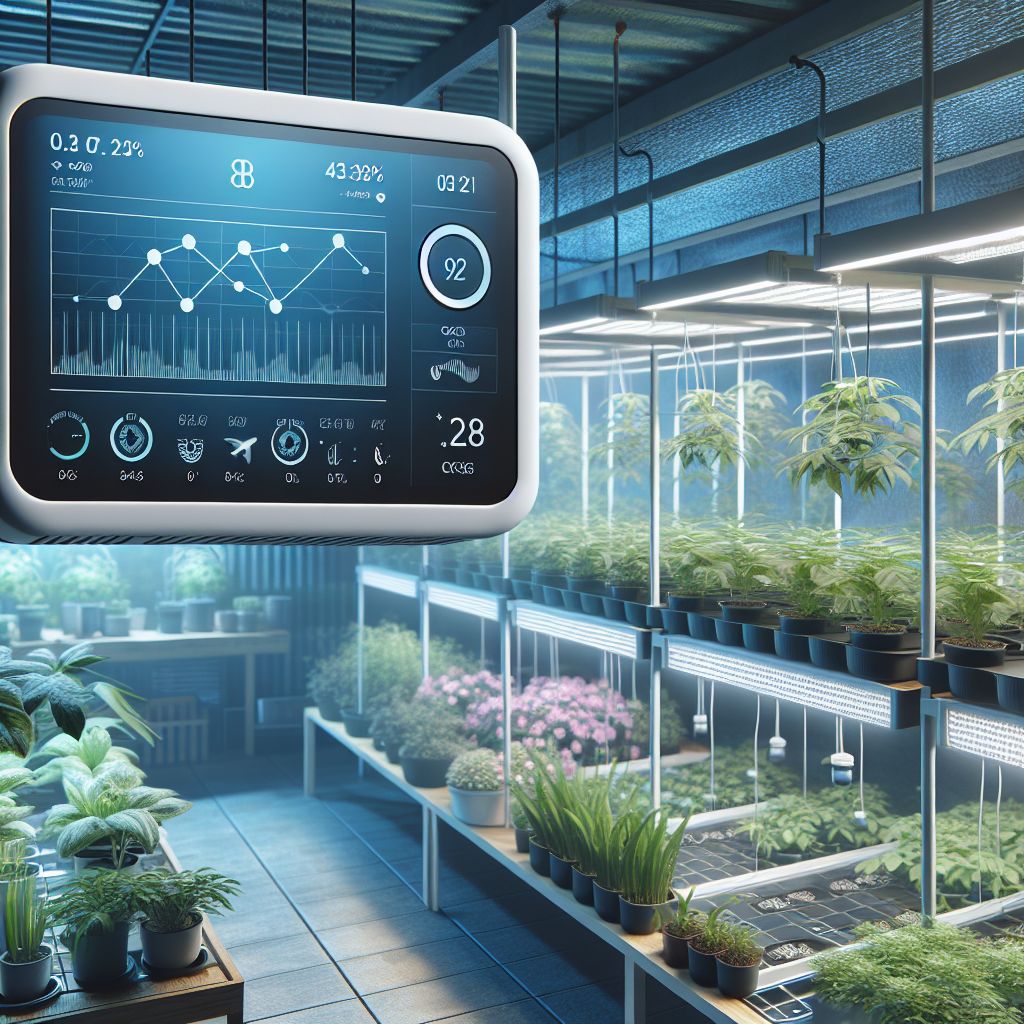Key Takeaways
-
Solar power reduces greenhouse operation costs significantly, it’s not unusual to see savings from a few hundred to thousands of dollars annually.
-
Using solar energy in greenhouses can extend the growing season, enabling year-round cultivation regardless of external weather conditions.
-
Installing solar panels can lead to improved plant growth by providing consistent and optimal growing conditions.
-
Switching to solar power is a big step towards sustainability, helping to reduce the carbon footprint of agricultural practices.
-
There are multiple solar panel options available, and choosing the right one depends on your greenhouse’s needs and structure.
Harvesting the Sun: A Greenhouse Game-Changer
When we think about greenhouses, we envision spaces brimming with lush plants and a warm, humid air, nurturing life year-round. Yet, the unsung hero of this verdant ecosystem could very well be the sun itself. Solar power, a formidable ally for the eco-conscious grower, transforms the traditional greenhouse into a beacon of sustainability and efficiency. Let’s explore how this technology is changing the game for growers around the world.
Cut Costs and Carbon: Unpacking the Savings
One of the most compelling reasons to switch to solar power for your greenhouse is the cost savings. Think of your greenhouse as a mini-ecosystem that, just like any other, requires energy to thrive. By harnessing solar energy, you’re tapping into a free and abundant power source. The sun won’t send you a bill, which means every kilowatt-hour of energy you generate is money saved.
Year-Round Growth: How Solar Empowers All-Season Farming
Another huge advantage of solar-powered greenhouses is the ability to control the growing environment year-round. Regardless of snow or sleet outside, your plants can bask in conditions that mimic the heart of spring. This consistent environment not only means fresh produce in the dead of winter but also a more reliable business model for commercial growers.
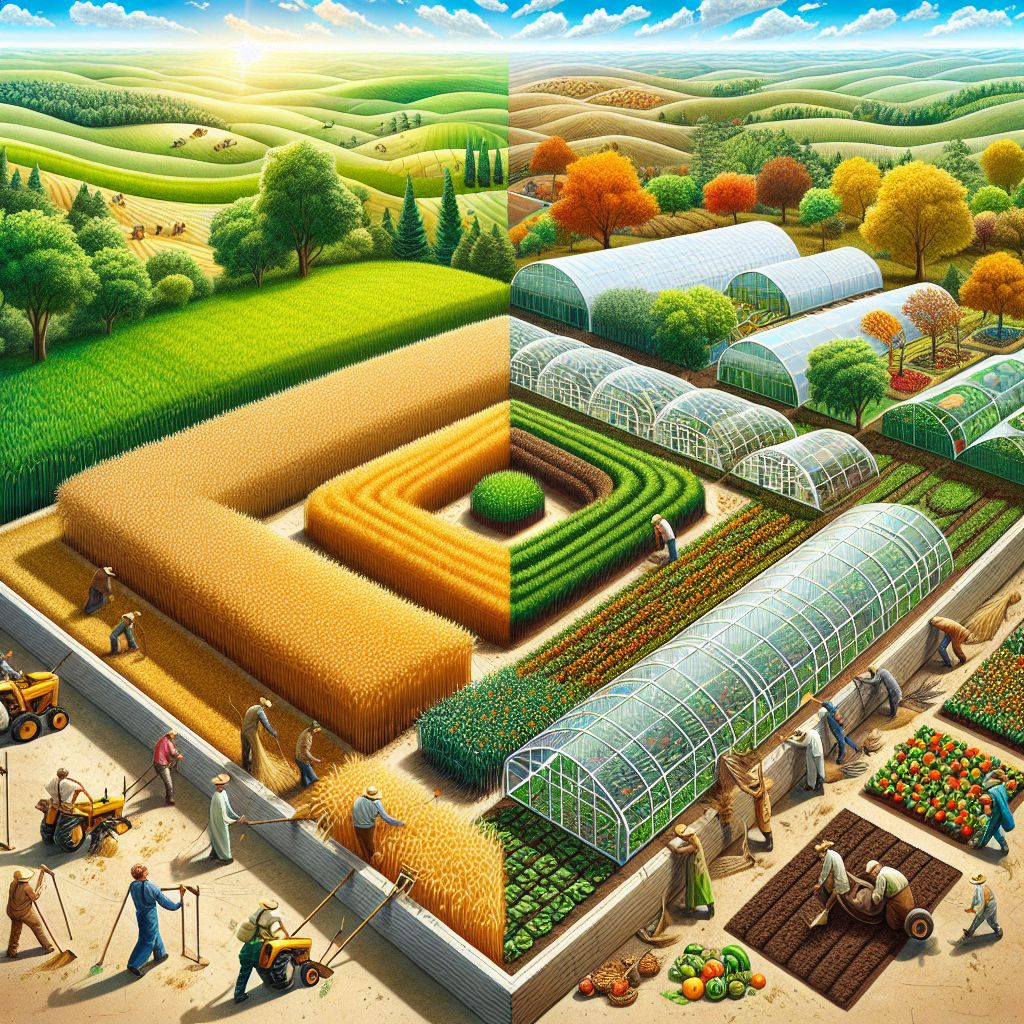
The Bright Side of Gardening: Greenhouse Solar Power Perks
Now, let’s shine a light on the multitude of benefits solar power brings to greenhouses. These go beyond just financial gains and touch on aspects crucial for both the health of your plants and the planet.
Slash Your Energy Bills
Yes, solar power can significantly slash your energy bills. But how much can you save? While initial setup costs exist, the long-term savings are undeniable. For example, a small greenhouse can save hundreds over a year, while larger operations can see savings in the thousands. It’s about playing the long game, your future self will thank you.
Understanding Solar Efficiency
Solar panel efficiency has soared in recent years, meaning you get more power per square inch than ever before. This efficiency translates into fewer panels needed and a quicker return on investment. Most importantly, it means that even on cloudy days, you’re likely to generate enough power to keep your greenhouse humming along.
Real Numbers: Solar Savings Over Time
To give you an idea, let’s say the average cost of electricity is about 13 cents per kilowatt-hour. A small greenhouse using solar panels could save around $500 a year, while larger commercial operations could see annual savings of $5,000 or more. These numbers add up quickly, especially as electricity costs continue to rise.

Boost Your Plant Growth
Aside from savings, solar power can lead to happier, healthier plants. Consistent and optimal light levels mean that plants can photosynthesize more efficiently, leading to faster growth and better yields. It’s like giving your plants a constant dose of their favorite food.
The Science of Solar and Plant Productivity
Plants thrive on sunlight, and the more they get (within reason), the better they grow. Solar panels can ensure that even during the shorter days of the year, your plants aren’t missing out on the light they need. This consistent exposure can help prevent issues like etiolation, where plants grow weakly due to insufficient light.
Case Studies: Higher Yields with Solar Power
Take the example of a tomato grower in California who switched to solar power. They reported not only a significant reduction in energy costs but also a 20% increase in their tomato yield. That’s a win-win in any grower’s book.
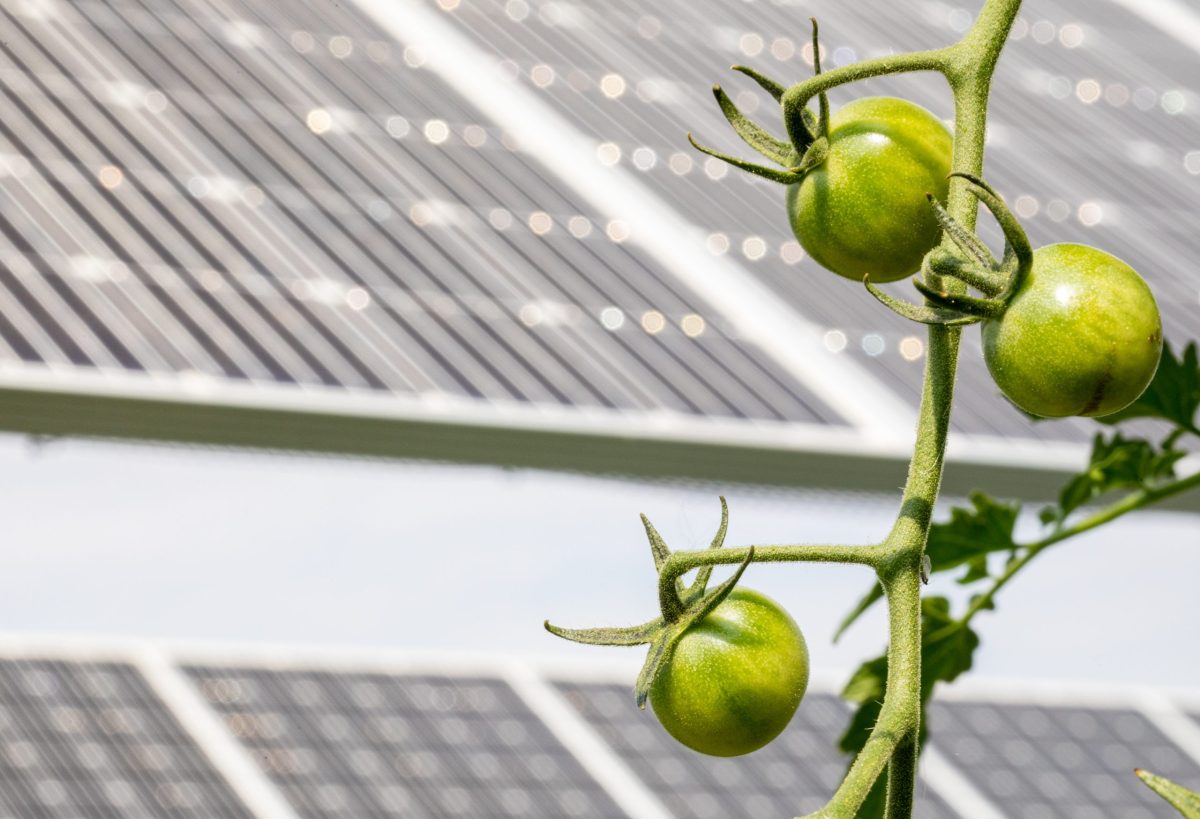
“How solar panels could protect tomatoes …” from energynews.us
And let’s not forget the environmental impact. Greenhouse gas emissions are a major concern, and the agriculture sector is a significant contributor. By adopting solar power, you’re directly reducing the reliance on fossil fuels, which is crucial in the fight against climate change.
Monocrystalline vs. Polycrystalline Solar Panels
Choosing the right type of solar panels is crucial for maximizing your greenhouse’s energy efficiency. Monocrystalline panels, made from a single crystal structure, are more efficient and space-saving but come with a higher price tag. Polycrystalline panels, on the other hand, are made from multiple crystal fragments and are more cost-effective but slightly less efficient.
So, which should you choose? If space is limited and you want the highest efficiency, monocrystalline is the way to go. However, if you’re working with a tighter budget and have ample roof space, polycrystalline panels are a solid choice.
Example: A grower with a small rooftop greenhouse in an urban area might opt for monocrystalline panels to make the most of the limited space, while a rural grower with more land might choose polycrystalline panels to cut down on costs.
Ultimately, the decision comes down to your specific circumstances, including budget, space, and energy needs.
Flex Panels: Adapting to Greenhouse Structures
Flex panels are another option that can be particularly useful for greenhouses with unconventional shapes or surfaces. These panels are lightweight and can bend to fit curved surfaces, making them ideal for integration into greenhouse roofs without the need for extensive modifications.
They might not be as efficient as rigid panels, but their adaptability can make them the perfect fit for certain greenhouse designs. When considering flex panels, think about the unique contours of your greenhouse and the potential for a seamless solar integration.
Installation Simplified
Installing solar panels on your greenhouse doesn’t have to be complicated. The key is planning and understanding the process. Start by assessing your energy needs, then choose the right type of panels and determine the best placement for maximum sunlight exposure.
Next, it’s time to install mounts and racking to secure the panels. This step is crucial for the longevity of your solar setup, so ensure it’s done correctly. Finally, install the panels, connect them to an inverter, and you’re ready to harness the sun’s energy.
Remember, safety first. Always turn off the power when connecting your system to avoid any accidents.
DIY or Professional: What’s Best for You?
If you’re handy and have some basic electrical knowledge, a DIY solar panel installation could save you money. However, for most, hiring a professional is the best choice to ensure everything is set up safely and efficiently. Plus, professionals can often help with the necessary permits and inspections.
Top Solar Installation Tips for Greenhouse Owners
Before you dive into installation, here are some top tips to ensure success:
-
Study your greenhouse’s sun exposure throughout the day to find the optimal location for panels.
-
Consider the angle of your panels, they should be perpendicular to the sun at noon for maximum efficiency.
-
Ensure your roof can support the weight of the solar panels.
-
Check local regulations and obtain necessary permits before starting.
-
Regular maintenance, such as cleaning the panels, will keep your system running smoothly.
By following these tips, you’ll be well on your way to a successful solar-powered greenhouse.
Solar Greenhouse Examples from Around the Globe
Across the globe, growers are tapping into the power of the sun to enhance their greenhouse operations. From small urban farms to large commercial ventures, solar power is making a significant impact.
In locations like the Netherlands, renowned for their greenhouse industry, solar power is becoming increasingly integrated into agricultural practices, showcasing the scalability of this technology.
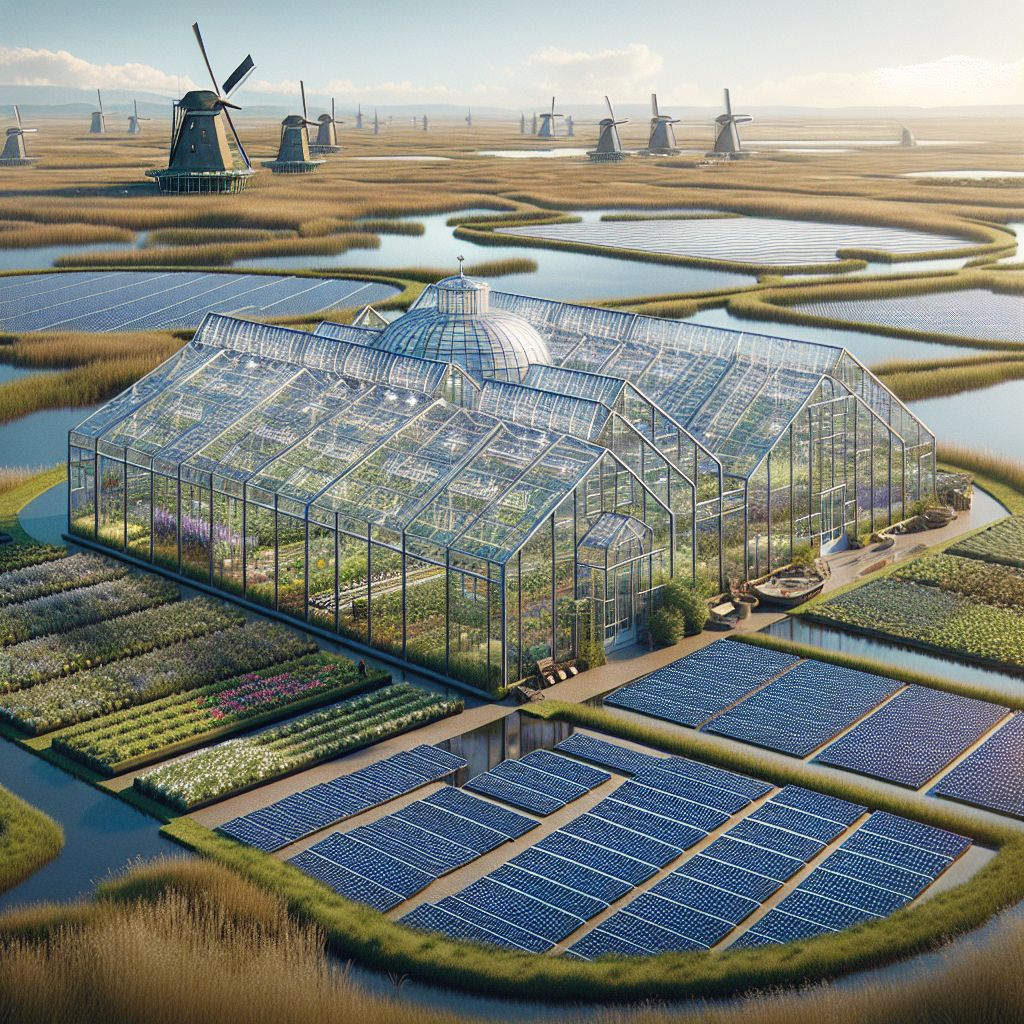
Small-Scale Wonders: Urban Rooftop Greenhouses
Urban rooftop greenhouses are a testament to the versatility of solar power. These compact spaces utilize every inch of available area to grow food sustainably. By combining vertical farming techniques with solar panels, these urban oases maximize productivity and minimize their carbon footprint.
For example, a rooftop greenhouse in New York City might use solar panels to power LED grow lights, creating a micro-environment that can produce food year-round, even in the heart of the concrete jungle.
In Brooklyn, New York, a rooftop greenhouse not only provides fresh produce to the local community but also serves as an educational hub, demonstrating the power of sustainable agriculture in urban settings.
This model is replicable in cities worldwide, proving that sustainable cultivation isn’t limited by location.
City Farming: Solar Integration in Urban Agriculture
City farming is all about making the most of limited space, and solar panels are a key player in this efficiency game. By installing solar panels on greenhouse roofs, urban farmers can capture clean energy to power their operations, often right above where the produce is sold or consumed.
This close-loop system not only reduces transportation emissions but also supports local economies by providing fresh, locally-grown produce to urban communities.
Commercial Giants: Large-Scale Solar Greenhouses
-
In the vast plains of Spain, expansive greenhouses cover the landscape, many now topped with gleaming solar panels.
-
China, a leader in solar technology, has integrated massive solar arrays into their greenhouse operations, setting a precedent for future developments.
-
In Canada, large commercial greenhouses use solar power to combat the high energy costs of heating during the long winters.
These examples illustrate the scalability of solar technology in greenhouse operations, from small family farms to multinational agricultural corporations.

“High-Tech Greenhouses Could Be …” from www.forbes.com
How Big Agri Harnesses the Power of the Sun
On a larger scale, big agriculture companies are harnessing solar power to dramatically cut operational costs and increase sustainability. By installing vast arrays of solar panels, these companies can generate enough power to run complex greenhouse systems, including automated watering, climate control, and advanced hydroponics.
The transition to solar is not just about environmental responsibility, it’s also a savvy business move that can lead to significant cost savings and operational efficiencies.
A sprawling farm in Massachusetts uses solar panels to lower its energy cost, showcasing the potential for solar to power even the most energy intensive agricultural operations.
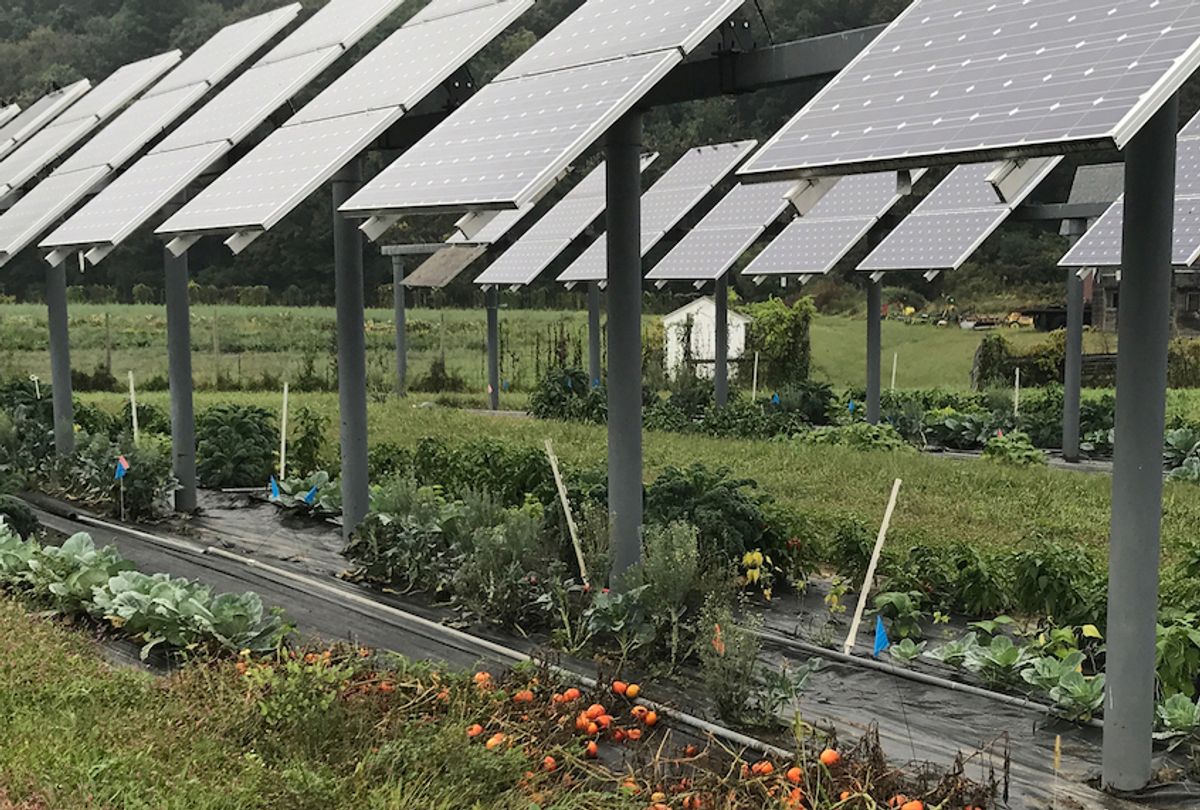
“Massachusetts is leading the charge in dual-use solar installations…” from salon.com
These examples from around the globe demonstrate the universal appeal and adaptability of solar power in greenhouse cultivation.
Community Change: Co-ops and Solar Greenhouses
Community co-ops and solar greenhouses are sprouting up as a collective effort to promote sustainable agriculture. These initiatives often combine resources to invest in solar technology, making it more accessible and affordable for small-scale growers.
Grassroots Growth: Sustainable Practices in Communities
At the community level, solar greenhouses serve as a hub for education and innovation. They provide a space for sharing knowledge about sustainable practices and often become a source of fresh produce for local residents. The cooperative model empowers communities to take charge of their food production while reducing their environmental impact.
Greenhouse Solar Troubleshooting
While the benefits of solar power for greenhouses are clear, there can be challenges along the way. Understanding common issues and how to address them will help ensure your solar greenhouse operates at its best.
Common Hurdles and Handy Fixes
Shading from trees or buildings can reduce the efficiency of your solar panels. Regularly trim any overhanging branches and consider the path of the sun throughout the year when positioning your panels. Weather variations can also impact solar output, so it’s wise to have a backup power source or battery storage system in place.
Dealing with Shading and Weather Variations
Shading can be a big issue for solar panels. To minimize its impact, make sure to place your greenhouse and solar panels where they will receive maximum sunlight. Weather variations, particularly in areas with less predictable climates, can also pose challenges. Here, battery storage systems can be invaluable, ensuring a steady supply of power even when the sun isn’t shining.
Energy Storage: When the Sun Doesn’t Shine
Battery storage systems are crucial for maintaining a constant energy supply. They store excess energy produced during sunny periods, which can then be used during cloudy days or at night. This means your greenhouse remains operational 24/7, regardless of weather conditions.
Maximizing Efficiency
To get the most out of your solar panels, it’s important to consider their positioning and angle. They should be installed where they can capture the most sunlight, typically facing south in the Northern Hemisphere. The angle should be adjusted according to your latitude for optimal sun exposure.
Positioning and Angle: Getting the Most from Your Panels
The right positioning and angle can make a significant difference in the performance of your solar panels. For example, if your greenhouse is located at a latitude of 35 degrees, tilting your panels at the same angle will generally provide the best year-round performance.
Upkeep and Care for Solar Systems
Finally, don’t forget about maintenance. Keeping your solar panels clean from dust, snow, and leaves will ensure they operate efficiently. Regular checks for damage and wear will also help prolong the life of your system and protect your investment.
For example, a solar greenhouse in cloudy Seattle might rely on its battery system for consistent power during the city’s frequent overcast days.
Now, let’s talk about maximizing the efficiency of your solar setup. It’s not just about having solar panels, it’s about making sure they’re working as hard as they can for you.
Growing Forward: The Sustainable Greenhouse Revolution
We’re on the cusp of a revolution in greenhouse cultivation, and solar power is leading the charge. By embracing this clean, renewable energy source, we’re not just growing plants, we’re nurturing a healthier planet. It’s an exciting time to be a part of this green movement, and the future is looking bright—powered by the sun, of course.
As we look to the future, the possibilities for solar-powered greenhouses are endless. Innovations in solar technology and greenhouse design will continue to advance, making solar even more accessible and efficient for growers around the world.
Farm to the Future: Next Steps in Greenhouse Solar Power
So, what’s next for solar greenhouses? Continued innovation, wider adoption, and even more efficient technologies. As we learn and grow, we’ll see solar becoming the norm in greenhouse cultivation, providing a model for sustainable agriculture that can be replicated worldwide.
FAQs about Greenhouse Solar Power
Let’s address some of the most common questions about greenhouse solar power. From savings to reliability, I’ll give you the straight facts so you can make the best decision for your greenhouse.
How Much Can I Save with Greenhouse Solar Power?
The savings from solar power can be substantial. Depending on the size of your greenhouse and the efficiency of your solar system, you could see savings from a few hundred to several thousand dollars each year. And with the cost of solar panels continuing to drop, the potential for savings is only going up.
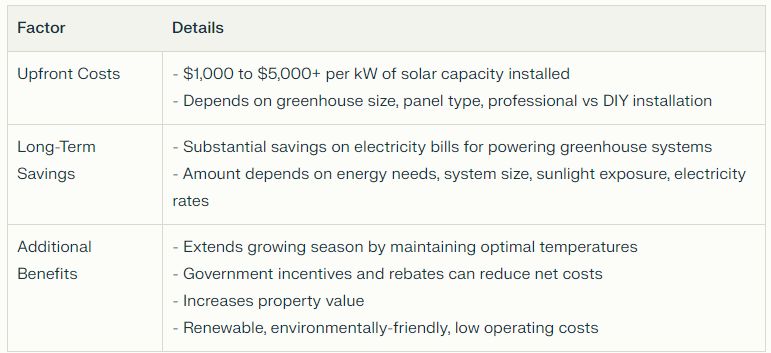
Is Solar Power Reliable for Greenhouses in Cold Climates?
Yes, solar power is reliable even in cold climates. Solar panels actually work more efficiently in cooler temperatures, as long as there’s sunlight. And with the right battery storage system, you can ensure a steady energy supply no matter the weather.
Can I Power My Entire Greenhouse with Solar Energy?
It’s entirely possible to power your whole greenhouse with solar energy. The key is to design a system that meets your specific energy needs, factoring in lighting, heating, and any other power requirements. With proper planning, solar power can provide all the energy your greenhouse needs.
What Incentives Are Available for Solar Greenhouse Installation?
Many regions offer incentives for installing solar power, such as tax credits, rebates, and grants. These incentives can significantly lower the initial cost of going solar, making it an even more attractive option for greenhouse owners.
How Does Solar Power Impact Plant Health Compared to Traditional Sources?
Solar power can have a positive impact on plant health by providing consistent and optimal growing conditions. Unlike artificial lighting, which can produce uneven or insufficient light, solar panels paired with the right greenhouse design can ensure that your plants receive the perfect amount of natural sunlight they need to thrive.


